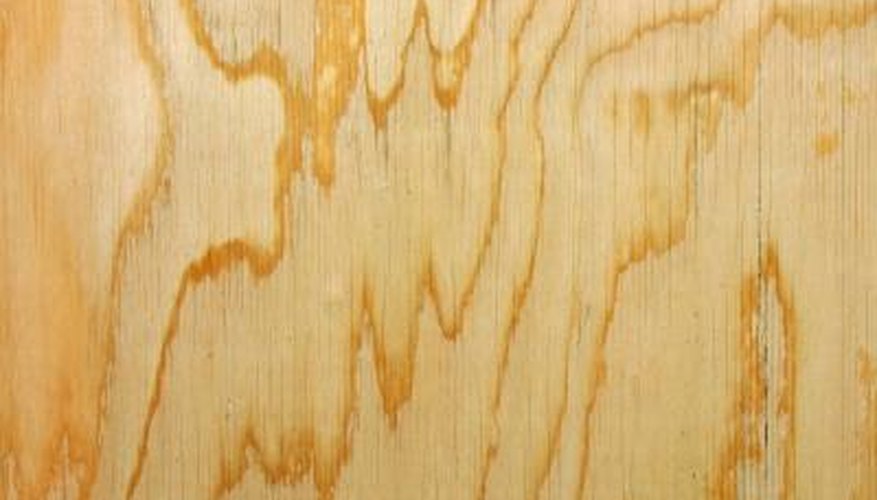Plywood doors are lightweight, hollow and less expensive than solid wood doors. Plywood doors generally come presanded but unfinished so that you can paint or stain it to suit your interior decor. You must let the paint dry completely between coats to achieve a smooth and durable finish, however, so be patient to make your investment of time and money worthwhile.
Pick up the plywood door and place it flat on two sawhorses. Protect the floor underneath the sawhorses with a dust sheet.
Smooth the plywood surface with fine-grit sanding paper. On new plywood doors that claim to come pre-sanded, run your fingers over the surface to find any rough spots left by the manufacture and sand them with even, circular motions. For older doors, inspect the surface for any dings and sand them flush with the surface in the same way. Flip the door over and repeat on the other side. Inspect the edges of the door for any rough spots or splinters.
- Plywood doors are lightweight, hollow and less expensive than solid wood doors.
- For older doors, inspect the surface for any dings and sand them flush with the surface in the same way.
Wipe both faces and all the edges of the door with a tack cloth to remove any and all wood dust that was generated during the sanding process.
Brush a coat of wood primer on one face of the door and on the edges. Apply the primer by using long, even strokes of the brush that run in the same direction as the grain of the plywood. When the primer is completely dry--read the packaging for appropriate drying times--flip the door over and prime the other side in the same way.
Sand down the surfaces of the door after the primer coat dries--primer may raise the wood grains slightly, resulting in a rough feel. Don't sand the primer coat off completely, just buff the surface lightly with 400-grit sanding paper to knock off any high spots.
- Wipe both faces and all the edges of the door with a tack cloth to remove any and all wood dust that was generated during the sanding process.
- Sand down the surfaces of the door after the primer coat dries--primer may raise the wood grains slightly, resulting in a rough feel.
Brush on a thin coat of wood paint or wood enamel to the side of the door facing up, as well as the edges. Use enough paint to cover the wood evenly, but not so much that the paint runs. Apply multiple thin coats of paint instead of one thick coat to achieve complete coverage. Allow to dry completely.
Flip over the door and repeat Step 6.
TIP
If you don't have sawhorses, you can use a two 5-gallon plastic buckets or anything else that will elevate the door and support its weight while keeping the edges free. Paint your door trim at the same time you're painting your door. That way, when the door is ready to hang, the trim will be ready as well. Make sure you use primer and paint designed specifically for wood. Wall paint may not adhere well to plywood.
WARNING
Check for paint runs on the bottom face of the door when priming and painting the edges. A paint run that goes undiscovered can mar the side of the door hidden from view as you paint--you won't see it until you turn the door over. Avoid painting a door that is still on its hinges. It's hard to paint the inside edge of the door, the top and bottom edges and the door frame unless the door has been removed.
